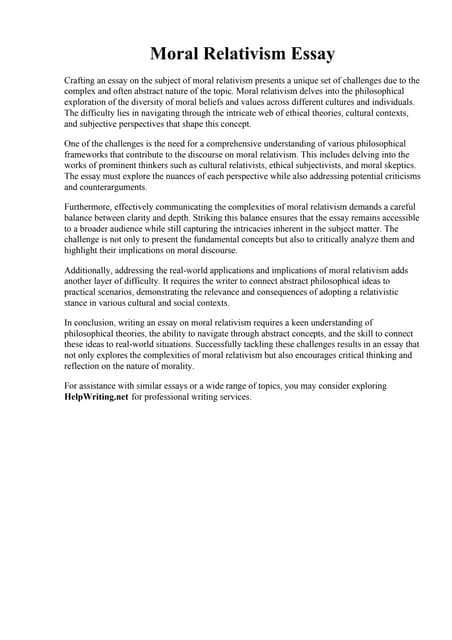A faceless, soft doll in red or blue; a wooden rattle; a mirror; kinetic sand; a rainbow silk scarf. For many families, this particular genre of children’s toy—often sold on Etsy, via targeted ads, or through subscription kits—may arrive benignly and incidentally into a child’s repertoire of plastic dolls, metal trucks, and rubber balls. But for other parents and their families, they are part of a larger system: an elaborate pedagogy meant to steer every aspect of a child’s life—including diet, environment, and even play. In these philosophies—popularized by “alternative” schools such as Montessori, Reggio Emilia, and Waldorf—such whimsical recreation is also a tool of parental control prescribed to ward off an ultimate threat: technology.
Today, “alternative” schools, which focus on “hands-on” learning and spiritual development, are largely considered niche options reserved for the very wealthy—although their reach quietly extends far beyond Silicon Valley and Park Slope. In pop culture, they may most commonly be recognized as the tech-free schools where eBay’s CTO and other Valley executives send their kids, supposedly driven by esoteric knowledge about the threat of the products their companies make. (Knowledge which, as scholar Morgan Ames has pointed out, doesn’t actually exist.) It’s more likely that these parents are anxious over a question faced by most parents today: What exactly does technology do to our children, and how do we protect them from it?
Parents’ individual answers to that question fall on a spectrum. Some, in the words of child icon Elsa, simply “let it go,” allowing tech to be a much-needed parenting aid. Others champion ameliorating measures, from limiting screen time, to delaying cell phone ownership, to using parental controls on the TV. But for a subset of parents, like many of those who employ “alternative” schooling, the answer is tech refusal—banishing it altogether. And where this kind of adamancy is present, other extreme politics often lurk just out of view. Such is the case with Waldorf and its underlying philosophy, a longer history of which reveals ideological ties to fascistic thought and racial hierarchies.
Although it represents one extreme, the roots of this niche pedagogy can help us understand the whole spectrum of anxiety when it comes to technology and parenting. Particularly, its history makes clear how the quietly interlocking panics surrounding the technologies of screens and vaccines connect to dangerous notions of purity; ideas that—just as wooden toys tend to appear in ordinary homes—have often made their way into the mainstream, mostly unnoticed.
Stagnant Souls
In 1919—against the backdrop of the Spanish Flu, countless political uprisings, and the aftermath of World War I—Rudolf Steiner founded the first Waldorf School, located in Stuttgart, Germany. Having grown up as the son of a railway worker, Steiner’s childhood had been shaped by the violent rise of modernity, and he was determined to save future children from the same fate. Intended as a school for the children of the workers at the Waldorf-Astoria cigarette factory, two-thirds of the students were children of factory workers; the last third were children of Steiner followers.
By that time, Steiner had gained prominence as the charismatic leader of an occultist movement he called “Anthroposophy,” underpinned by an original, esoteric philosophy replete with a comprehensive theory of reincarnation, spirit worlds, and higher realms. Waldorf was Steiner’s translation of Anthroposophy into pedagogy—down to the curricula and classroom design. It was, in essence, a pedagogical laboratory for an alternative spiritual life, one imagined as free from modernity while tied intimately to its labors and afflictions.
The Steiner model, or “Waldorf schooling” as it became more commonly known, in part preserved traditional education in the present to safeguard it for the future; students spent time outdoors to learn from nature and worked on handicrafts. But it also used approaches that were archaic even for the time: children were categorized into supposedly preordained temperaments based on the typology of humors (phlegmatic, melancholic, sanguine, choleric) that had fallen out of the medical canon centuries prior.
A system of guided movement called “Eurythmy” also played a large role in this counter-training, not just as physical education, but as medico-spiritual intervention to care palliatively for the kids. In that first year of the school, students likely would have practiced a specific pattern from Steiner’s growing repertoire, which he taught widely to address the pandemic that raged outside: “The Immune Sequence.” By coordinating sound, dance, and intention, its practitioner was thought to become their best, truest self, and therefore physically immune.
At the time, medical technologies and interventions, especially vaccines, were rapidly advancing. But Steiner believed that they made one “lose an urge for a spiritual life.” He argued that illness was not just the result of pathogenetic spread or due to microorganisms. There was an extra-material reason for illness to present in its host: karma. According to Steiner, not all souls were created equal. As with the temperaments of children, the wider outcomes of this life are already written by the actions in previous incarnations, which corresponded to the supposed “evolution”—or “devolution”—of race.
Put bluntly, Steiner saw the white race as the race of the future—the highest form of being, the endpoint of reincarnation, and therefore the most naturally immune. Meanwhile, melanin showed the susceptibility, karmic impurity, and “stagnation” of a soul. These stagnated souls were, for Steiner, one way illness spread—to be faulted not just for their own static sickness, but that of society. The problem posed an endless feedback loop: society ruins the soul and ruined souls, in turn, degrade society. Care of the individual soul—via the body and the mind—was to be the cure, the solve, the salvation.
Additional schools followed in Germany, The Netherlands, and England. Then, in 1928, the first Rudolph Steiner school opened in New York City as a private school, which still operates today. Of course, Steiner’s set of beliefs made Anthroposophy ripe for uptake in the emerging Nazi Party. Although the Nazis temporarily closed nearly all Waldorf schools in their control, many of Steiner’s followers—including his widow—had close ties to the Party, where the occultist-karmic philosophy was taken up, both strategically and in deeper belief: both systems of thought worked to bring the world into “harmony” and achieve “regeneration.”
Today, the connections (and disconnections) between Nazism, fascism, and this spiritual science are somewhat of an academic debate. According to the historical scholarship of Peter Staudenmaier, much of Steiner’s works and literatures were “cleaned up” to delete mentions of race when translated into English. That’s mostly how the ideas are implemented today: While every Waldorf school differs slightly, Steiner’s initial approach remains largely intact—from typologies, to daily Eurythmy, to anti-vax sentiment—with mentions of race simply excluded. But Steiner’s theories of illness, race, and technology all come from the same well, no matter how obscured in or by the present. His notion of the ideal child endures: The perfect kid is one who is pure.
Fantasies of Purity
And purity, it turns out, can be marketed and purchased.
There are now roughly 125 Waldorf schools nationwide and more than 3,000 internationally, according to one Waldorf executive. Where Waldorf exists as an alternative, parents who see themselves as progressive—even Left—have sought it out, some in spite of larger philosophical differences or outright disbelief. “Private schools almost by definition have to craft stories that appeal to privileged strivers anxious about their children’s futures,” Morgan Ames wrote of Waldorf schools in 2019 for the Los Angeles Review of Books. “Some of these stories recount how their graduates’ creative brilliance was spawned in their school’s tech-free environment. Related ones ply anti-contamination themes, and fetishize the purity of childhood.” These stories frame technology as a constant threat, presenting Waldorf schools as bubbles of safety, oases within the desert of the modern.
Waldorf is not alone in the pursuit of a tech-free environment. There have been many movements and philosophies that attempt to achieve purity by cutting off access to technology, specifically media, and they don’t all bend towards fascism or even apoliticality. Tech refusal looks quite different in the context of utopian projects like the back-to-the-land movement of the ’60s and other forms of communal care focused on raising children in nature, including the MOVE Family and the international “unschooling movement” of the ’70s. In the hands of the Left, the rejection of technology can be a radical act of carving out a space of resistance within capitalism and systems of repression to imagine a deeper liberation. But, following Danya Glabau in Real Life, “As a metaphor, purity easily translates from necessary practices to exclusionary principles.” Where the aspiration of purity becomes dangerous is when principles entail protecting one’s individual child at the expense of a child next door.
Steiner’s adherents, whether they are “Waldorf families” or in the Anthroposophical movement, or both, subscribe to a sense of predestined exceptionalism that Laura Portwood-Stacer argues is frequently behind the rejection of media and technology—including vaccines. Such principles can lead believers and their fellow travelers to reject “herd mentality” and compromise herd immunity in the process. While Waldorf philosophy aims to protect new life from various social ills, it has become a literal incubator of viruses that, like its greater ethos, organically seep beyond its walls—whether in the case of a Waldorf school at the epicenter of a measles outbreak in New York or now, during the Covid-19 pandemic. Estimates vary, but some suggest 60 percent of Waldorf children are unvaccinated against infectious illness for which there are routine childhood vaccines. Where states grant exceptions for religious or philosophical reasons, rates of refusal are even higher.
The endurance of this resistance is disquieting precisely because of the ways that this notion of purity feeds into unbridled exceptionalism—especially as it takes new, viral forms in our present. Today, 15 to 20 percent of Americans believe in some form of the QAnon conspiracy—another system of belief that, like Anthroposophy, has ties to fascism and the occult—while vaccine rejectors claim that taking the shot is antagonistic to bodily autonomy, and even argue in some cases that it causes sterilization. In turn, some vaccine rejectors are referring to their eggs or sperm as “vaccine free”—triumphantly stating that they are the only key to any possible reproductive future precisely because their bodies stayed pure of medical technology. These ideologies reject the basic, collective reality of modernity and late stage capitalism, as if by doing so they might manifest a different future, one that furthers the comforting—and ultimately racist—fantasy of purity.
It makes sense that Steiner’s philosophies are frequently read as anti-modern. But perhaps this is the other side of modernity. To buy into these teachings is to search for alternative spaces within techno-culture, turning the school into a pastoral enclave that can be carried home with children in the form of rules for families and domestic space. In cherry-picking Steiner’s philosophy to exclude these other insidious forms of purity ideology, Waldorf schools have, in the words of scholar Wendy Chun, “updated to remain the same.”
During our ongoing pandemic, at a Waldorf School in Upstate New York, middle schoolers and high schoolers continued to meet regularly outdoors to practice Eurythmy. According to a blog post by the school, they decided to focus on one pattern of movement to address this latest health crisis: “The Immune Sequence.”
Originally appeared on Logic Magazine Read More







